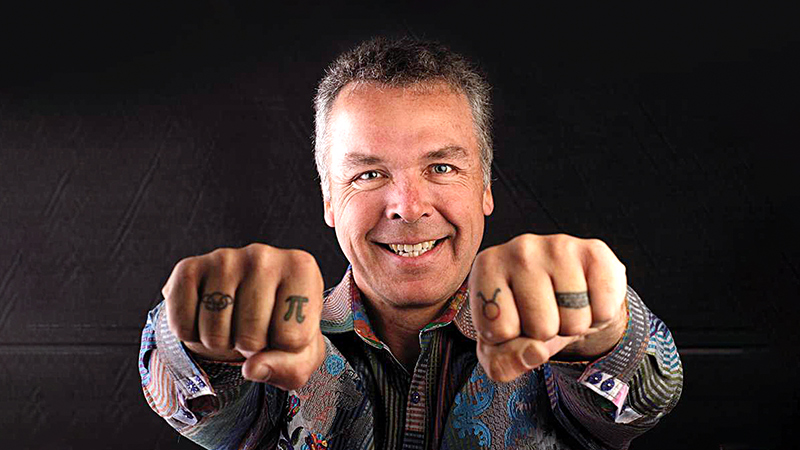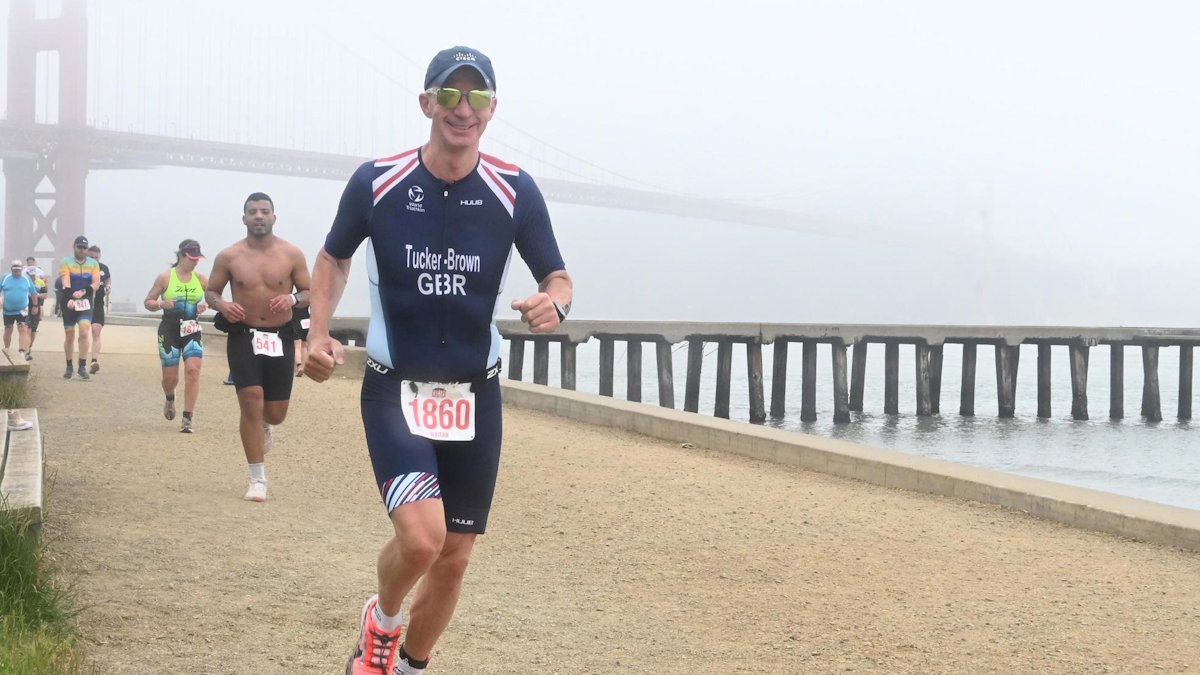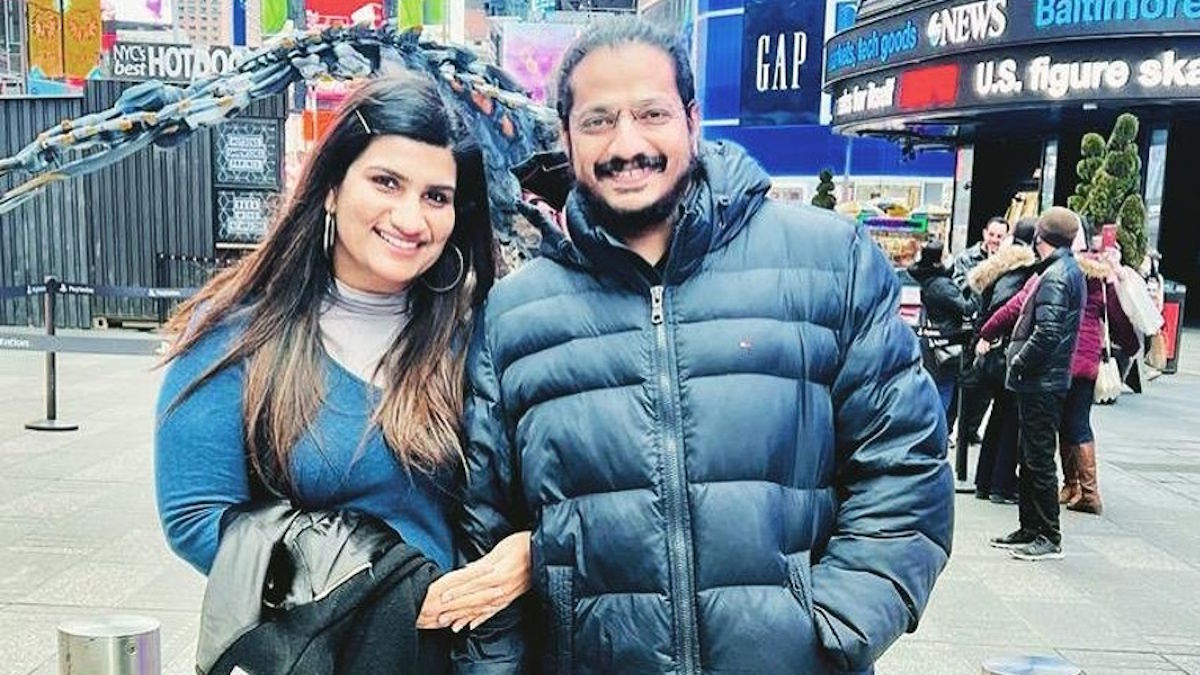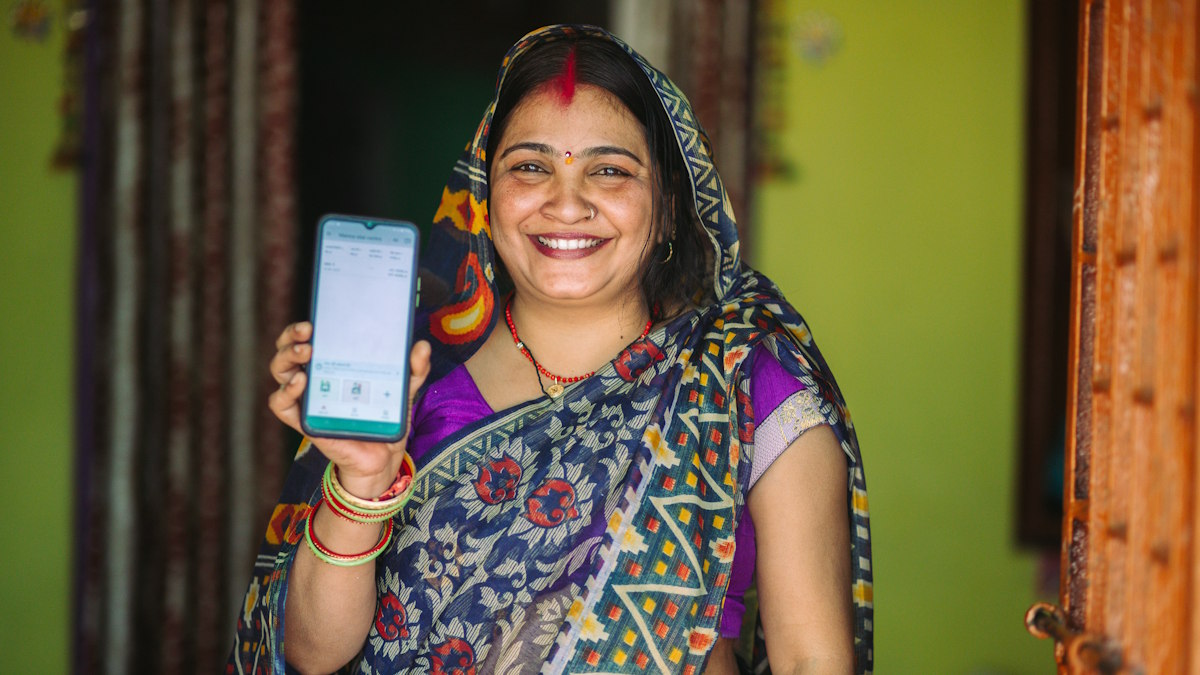What is your role at Cisco?
Hey, I’m Dave Ward and my role is the SVP, CTO of Engineering and Chief Architect at Cisco. Try saying that ten times fast. Just kidding, don’t; I have someone waiting in the Goldblum Room.
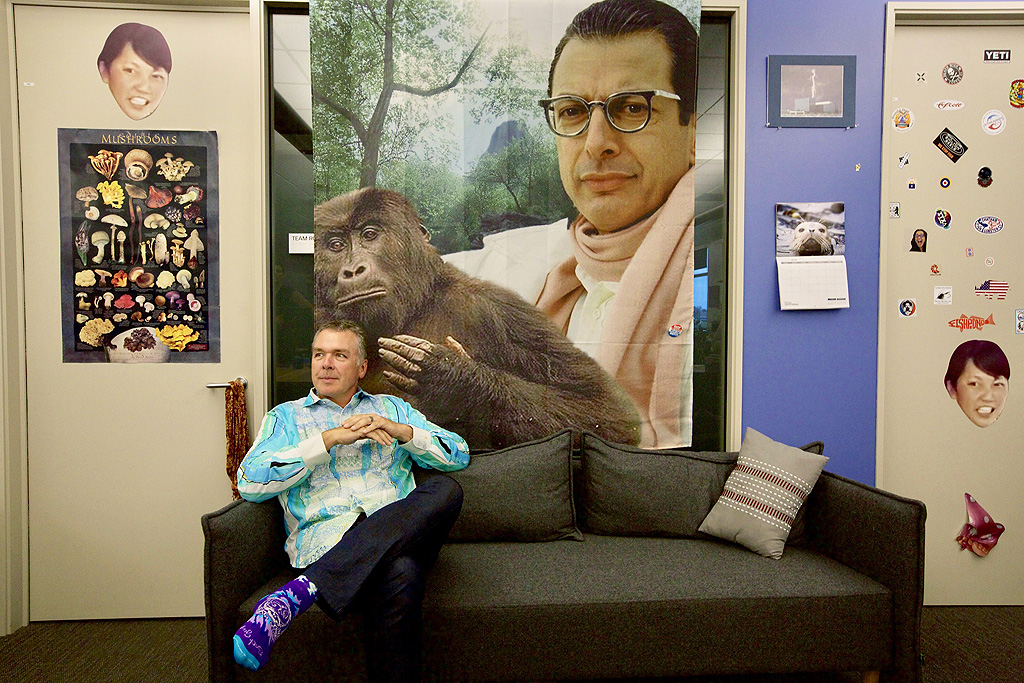
We’ll get to Jeff later in this interview. Now, what do you love about what you do?
A lot. But my favorite thing is building more Internet and more awesomeness onto the Internet. Cliché, I know. I also love hearing from key customers and partners about how they view the future of technology and how they want to transform their businesses or consumer experience through technology. Lastly, I endeavor with Academics, Universities, researchers, Open Source coders, and entrepreneurs, to keep up with the latest and greatest ideas external to Cisco’s walls. Innovation starts with a need and an idea, and Cisco is there to create solutions often beyond what anyone thought possible.
I also work to set the trajectory of our entire NSB portfolio, which includes what we build organically, what we acquire, and who we partner with and why. And because I’m lucky to have the opportunity to work to set the vision and technology for the Internet architecture, as well as key open source coders, standards, foundations and influencers that make Internet more powerful and secure; the goal is to start connecting us to one another, and our devices and machines in more globally holistic, and substantive ways. And then just maybe, e-commerce (while I appreciate online shopping as much as the next guy) and videos of cats playing piano will be further from being the Internet’s most active industries.
I spent the first half of my career building the equipment that is the backbone of the Internet; and am spending the second half working on how we use the Internet. Sorry again for the cliché, but I love doing both. It’s all I think about.
Cisco is proud to have innovation programs that get external and internal folks involved and thinking. Tell me about your work with Cisco’s innovation programs.
Sure. Let me start by saying this: Cisco is not a young company. We’re pioneers, but that means we’ve been around a LONG time and therefore have built a lot of the internet that we know today. Innovation, and the value we place on it, keeps us young. Put another way, one of the most vital things I do in my role is to create the vision for the innovation programs from people to products. We enable all our employees to design experiences, using customer driven and innovative methodologies, and integrate and build hardcore technology into our products. What that means is empowering our entire global workforce to innovate, regardless of the function they are in. In this sense, we are all creative and we’re all futurists. We’re all tweens between technology transitions.
Hmm. Okay. Am I a tween? I sure don’t feel like it.
Have you innovated or thought about they way the world or Internet could be better lately? That’ll fix you right up. Take me for instance - four grandkids and yet most of the time? Totally shoeless.
You might have something there. Interesting socks, by the way. What are those, Teenage Mutant Ninja Turtles?
They’re elephants. Elephants at a chimp party. You need to adjust those metaphorical lenses.
Oh wow, look at that. Anyway, say more about these innovation programs.
We work through a number of different programs, and we don’t just stop at generating ideas or new ways to think – we actually partner with the best and brightest across the company and various industries to get those flowers to bloom.
For example, we have a funding mechanism through Cisco Tech Fund, which funds employees who have a creative idea that they believe is of high value for the company. This gives them enough money and support to hire folks and actually go and build the product themselves. The key is that it’s tied to the businesses and making sure we can get the design pattern, functionality, architecture or even code into our products. At first, many don't feel that engineering is an art form - but in fact it is - it is an intellectual and passionate form of expression and that's what I'm here to cultivate at Cisco.
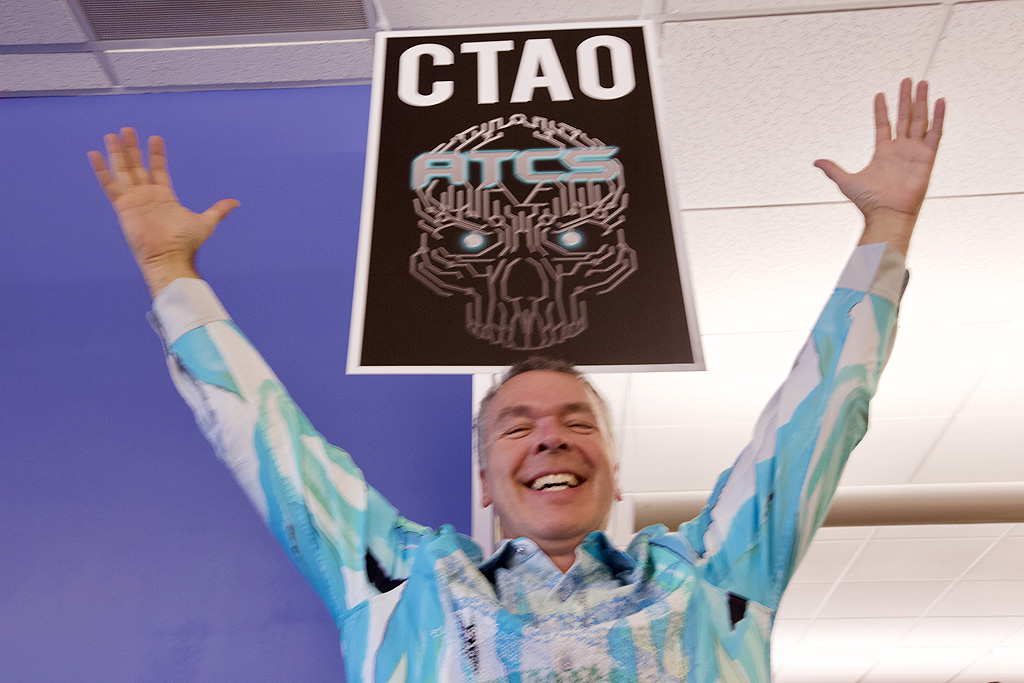
We also bring in and work with new talent. I am particularly proud of the Cisco International Internship Program where we bring around 60 to 80 students to Silicon Valley for a year and have them function directly with engineering teams. Thanks to this program, we can get leading edge ideas and top talent working here, while students get the opportunity to work with the most talented engineers in the industry. After the internship is over, many of them want to come back and work at Cisco, or with our customers or partners. Over the years, we’ve built a very strong global alumni network for this program and we all stay connected. It’s incredibly rewarding all across the board. And these aren’t just one offs - the goal is to work with individuals towards long-term, career-length relationships.
Through these programs I believe we are transforming our workforce, our portfolio, our customer’s business foundation and our digital world.
New topic: Tell me about your passion for conservation.
I’ve always lived in the rural areas, and here in California I am a captain on a volunteer fire department and have a small farm. I deeply care about preserving and protecting our planet – from species to plants and trees. I also really care about improving the human condition. Protecting the environment means working with people who live there and are stewards of the ecosystem. Several careers ago I was a Professor at the University of MN working on super computing, image analysis, photonics, high speed networking and distributed computing in the Department of Forest Resources. Interestingly, it led me directly into my networking career. But that history is for a different interview.
Here at Cisco, I started to focus on conservation efforts about four years ago. I’ve built a pretty star-laden team around it to continue to innovate and build new solutions to protect our planet. The group is called “Sustainable Impact” and we believe that we have IOT, Data processing, cloud and AI reference architectures that are applicable across many use-cases. It feels like a natural fit for how I want to expand the use of the Internet. There’s just something about being able to say: “We’re making a difference that’ll be around for years to come” that’s fulfilling on a level that’s hard to explain, even for me. And I rarely shy away from explaining things. Just ask anyone who’s ever asked me a “quick question.”
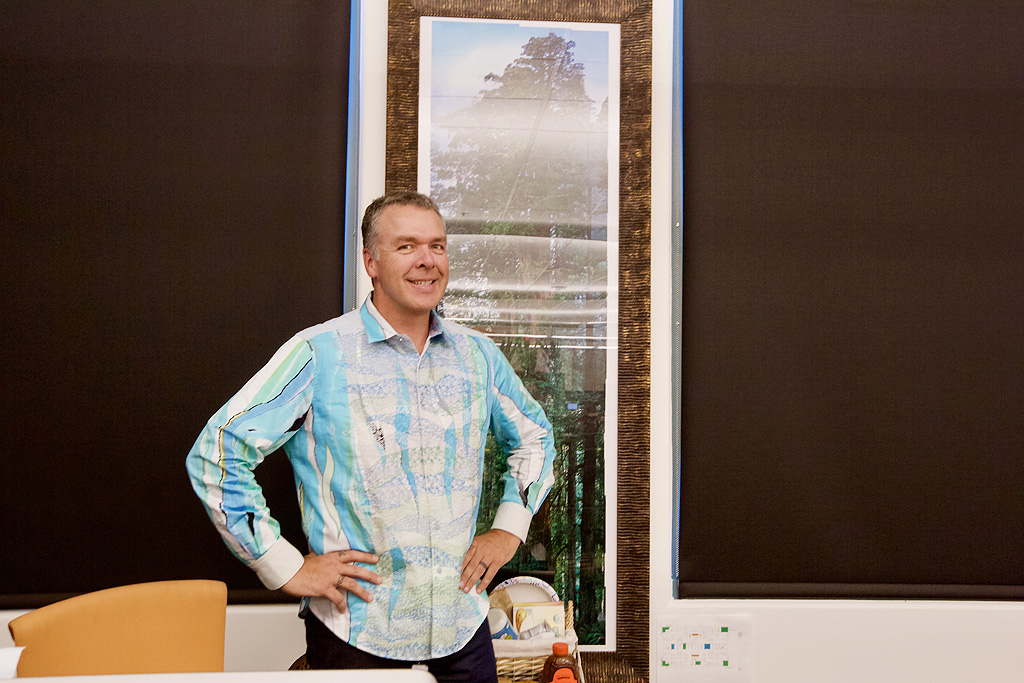
Recently, together with our partners, we’ve done amazing work, like fighting Rhino poaching. Some of it was featured in “Save This Rhino” the documentary that got incredible attention in Australia and the UK, and was just released in the US. Getting exposure this way has inspired more companies to ask Cisco about Techno-Conservation, and gotten leaders in the space curious about what we can do together. We’ve catalyzed a new discipline of engineering and are consolidating the often fractured efforts of using technology in environmental and conservation capacities.
We are now scaling our efforts globally across multiple ecosystems – and we are not limiting ourselves to conservation. We’ve taken the reference architecture we created and applied it to school safety, better healthcare at hospitals, improving ports, cities, and other areas that affect our quality of life. It's all based on the same architecture of building a heterogeneous network or communications network. The difference lies in the method of visualization and the modes of data collection and machine learning and analytics.
We’ve also found incredible value in integrating identity, management and operations in multi-spectra deployments. No technology religion. If you want that sensor on the internet, or in harsh environmental conditions; want the data locally or in the cloud, want it secure, want AI and analytics applied to it? That’s our job.
How do diversity and innovation go hand-in-hand?
Did you hear the one about the cowboy who walked into the engineering lab?
No.
Nor have I. Keep thinking about it though, until the answer is the square root of zero. But, we are switching topics faster than packets through a Spitfire. Just trying to keep the conversation lively with some geek humor. When I talk about diversity I like to have people’s full attention. It’s really, really important to me. And I like to make it a dialogue. Which is a little tougher in the case of an interview, but I’ll try.
Next time we’ll make it a round table!
I’d be happy to, inclusion is a top goal of mine. When I bring folks into the team they must have energy, ambition, inspiration and intelligence; but they don't necessarily have to be your traditional CV with only degrees in computer science, mathematics or engineering. I attribute my own success to having surrounded myself with people with different backgrounds, disciplines, and experiences who solve problems in new ways. The physicist Richard Feynman said: “If you think you understand it, you don’t.” So, I like getting new perspectives that make it so that I’m constantly learning.
I like that. Humility is physics…
There you go! If you only have one viewpoint when looking at a problem, you're only ever going to find one solution. I refuse to follow that pattern and instead prefer more of a mosh pit of ideas.
Take our Co-Innovation Centers, where we directly innovate with customers, partners, developers, nation-states and startups. It’s where we then expose others to our core technologies and innovate directly with them towards solving their problems. It's another way to get closer to the diversity of our customers and help them co-innovate the solution to their pressing issues. One example in the UK was the first deployment of 5G technology in that country. We’ve connected many industries in 5G IOT use cases and of course public services, enterprises and consumers. When we work with customers and partners together we use a rapid design and prototyping methodology from the CHILL program. It’s an extremely tight feedback loop between end-customers, businesses, partners and Cisco that puts everyone into the innovator’s driver’s seat and egos checked at the door. The best idea wins, not the loudest voice.

Intellectual diversity through human diversity is what finds the best idea. Our human neural networks are set up to grow by being challenged by adversity. And sometimes that adversity just comes in the form of new and different ideas that break us out of our own programmed ways of thinking. I spend a lot of time by myself - in particular when I find myself in an intellectual rut or single way of thinking - and am processing, processing, processing the facets of the problem, the technical building blocks.
Tell me what’s coming up next in FY20.
Ah, so many places to bring up 5G, so little time. In FY20 we're definitely focusing on bringing 5G and cellular communications and multi-radio communications to our enterprise customer base. To be delivered via service providers and other solution partners, it really has to be a solution incorporating Wi-Fi, cellular, LORA and wired links that attach everything and everyone to the Internet seamlessly on the same secure fabric. We also have to provide a common policy across any of those different radio access technologies. This new spectrum-agnosticism is critical to IP networking. The goal is a single IP network regardless of the access technology. Easy to say, but it really throws the Internet architecture on it’s head. As long as we’ve used the Internet, the access technology has determined who we are and what services we get. I don’t want to be limited by that architecture and through multi-access devices, and single IP network; I want to get onto the Internet every way possible and have a ubiquitous experience with the most bandwidth possible.
Okay - changing gears again. What’s on (or around) your desk?
My desk is under here somewhere…Mostly it’s photos of the team expressing themselves (i.e. looking silly), stickers made of those photos, signs posted by the team insisting those photos be taken down, stickers of those signs.
Oh, and unique health beverages and progressive snacks - the more interesting question is what’s in my office fridge.
I like open communication and a comfortable environment. We laugh often and enjoy coming to work. We have the tightest, most caring culture in a team I have ever worked with. I have a lot of balance trainers and leg weights for walking the stairs. All to improve my time outdoors on hikes, fishing, balancing on boats and overall attempt at centering my fractal mind.
As I mentioned earlier, my background is in natural resources, and the team is passionate about nature and conservation, so there are a lot of trees around here too. And the theme of the building is the Himalayas.
Is that why there’s a life-sized Yeti in the lobby?
What are you talking about? I never saw a life sized Yeti ... just kidding. Yes, it’s a mascot and a warning to those visiting or entering the building that you are entering the world of yet-to-be-real. Anyway, like I said, it’s a mish mosh of cultures, expressions and artwork. There are also some go-carts which the team isn’t afraid to use. Some good clean fun and healthy competition never hurt anyone. Except my Executive Assistant Christy, that one time. But Quyen deserved that win fair and square.
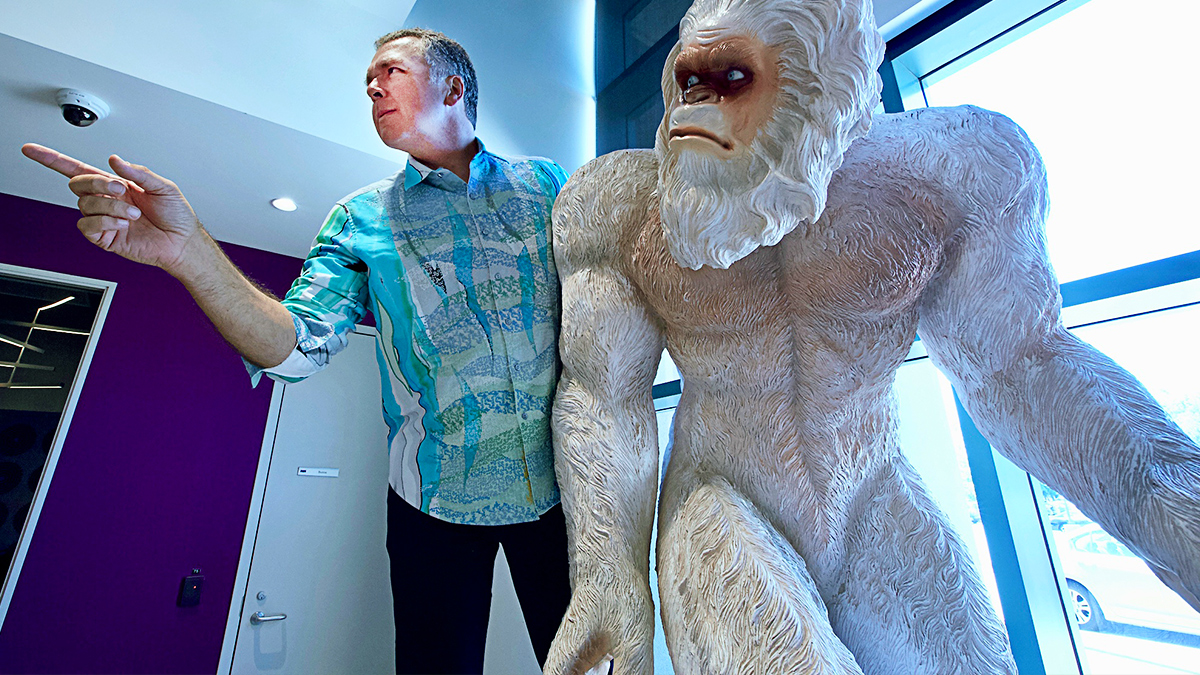
Back to Jeff Goldblum and the chimp, what’s going on?
This Jeff Goldblum print was actually a gift from one team member to the other, and we knew it had to be hung right here outside the window of our main Team Room. So now it’s called the Goldblum room. Easy to spot when I need to meet with folks, and looks fun on a calendar invite.
I get to my desk by 6:00 a.m. in the morning—I like to keep most of the lights off and so the only light on is the one in the office where Jeff Goldblum hangs. It's totally dark except for Jeff Goldblum and the crazy gorilla. It's the only thing you can see lit up in the entire floor. It’s one of my favorite times of day. And then as people arrive to work, it’s great to see the look on people’s faces when a backlit Goldblum and gorilla greets them.
Why is there also Wiccan tapestry?
Doesn’t everyone have Wiccan tapestry by their desk? No? For me it doesn’t have symbolic meaning, only fond memories. I hosted a customer event in Boston and we took a side trip up to Salem. Many members of my team are very interested in the history of the US and New England, and that includes Salem. We're relatively new agey, hippie Californians here, so are curious about anything that leads us towards another way of thinking - including the use of crystals, natural healing and things like that. There is not just one technology religion, or one way of doing anything in my world. Not just one way of expressing oneself, or of connecting us to one another. Not just one use of the Internet or just one solution. I could go on and on. It’s sort of a pan-solution belief system.
I see a shark hanging from the ceiling?
Oh you noticed Brownian motion of things that collide together to form the team aesthetic! I caught that shark off Florida. Well, sort of. I was meeting with a customer - by the way a fascinating satellite communications company - and we had a couple hours of daylight left, so we went fishing. It was 275 pounds in 415 feet of water. This is a replica of that shark. It’s the largest fish I’ve ever caught and it kicked my butt. The fish surrounded by a couple of blackfin tuna and an awesome pic of Table Mountain in South Africa. I’m a catch and release type of angler so, no animals were harmed in the making of that replica. There are also a lot of Sharks fans here in San Jose so many people come to give homage to the shark. I’m fascinated by how little we know about sharks and how important to the ecosystem they are; more on that later.

And, a framed giant tree poster is behind your desk?
I need to be out in nature and sometimes it’s not easy to combine that with having one of the most extremely high-tech jobs in Silicon Valley. Having that tree, which is the tallest tree in the world, sitting right over my shoulder makes my day brighter. It also towers above me, which reminds me not so subtly that there’s always something bigger than I am. Ego is so often the enemy of creativity and innovation.
What makes you appreciate what you do?
What we're doing at Cisco is not just for the sake of technology, it's actually to solve problems. The fact it’s at the highest end of high tech, really hits my geek needs. Thankfully some of those problems include conservation and society and some of those problems include communication and secure and private data. Some of those problems are scale, bandwidth, performance of networking and operating systems. How we interact with all the infrastructure and can use compute, cloud now to solve these problems. The Internet is infinite and ubiquitous. Until, it’s not. The use of resources by that equipment has an impact on the planet. So I’m also mindful of services and methods to dramatically decrease that footprint.
All of the problems I choose to work are to build better businesses, public services and society. Why think any smaller than change the trajectory of the Internet and the world? The application of engineering as that artistic expression and deep love of mathematics and building products is how we at Cisco approach solving these problems. How and what technology we innovate are the sketches of the future. My belief that the Internet is the best communications medium is deeply ingrained.
The Internet and providing ubiquitous communications is in my DNA. Every one of my red and white blood cells has an IPv4 and V6 address. The question I ask everyone is: if you can't do it on the Internet, is it even worth doing? If anyone reading this can answer that, or wants to start a dialogue, you’re welcome to stop by. My building is hard to miss, it’s the one with the Yeti. Flames, comments, questions…you know where to send them.
###
We welcome the re-use, republication, and distribution of "The Network" content. Please credit us with the following information: Used with the permission of http://thenetwork.cisco.com/.
